There have been a lot of innovations in the deer hunting world over the last 30 years, but probably none as significant as the invention of the trail-camera. While initially more of a novelty item, vast improvements in technology and the availability of many affordable options have turned trail cameras into a valuable scouting tool. In fact, for some bowhunters, running trail cameras has become a serious hobby in itself.
The utility of today’s trail cameras, however, goes beyond just locating big bucks to target during deer season. They can also be a source of valuable information about the local deer population where you hunt, providing intel such as deer density, sex ratios, age structure, and even fawn recruitment rates. So how does the average trail camera user collect and analyze this kind of data? With a trail camera survey!
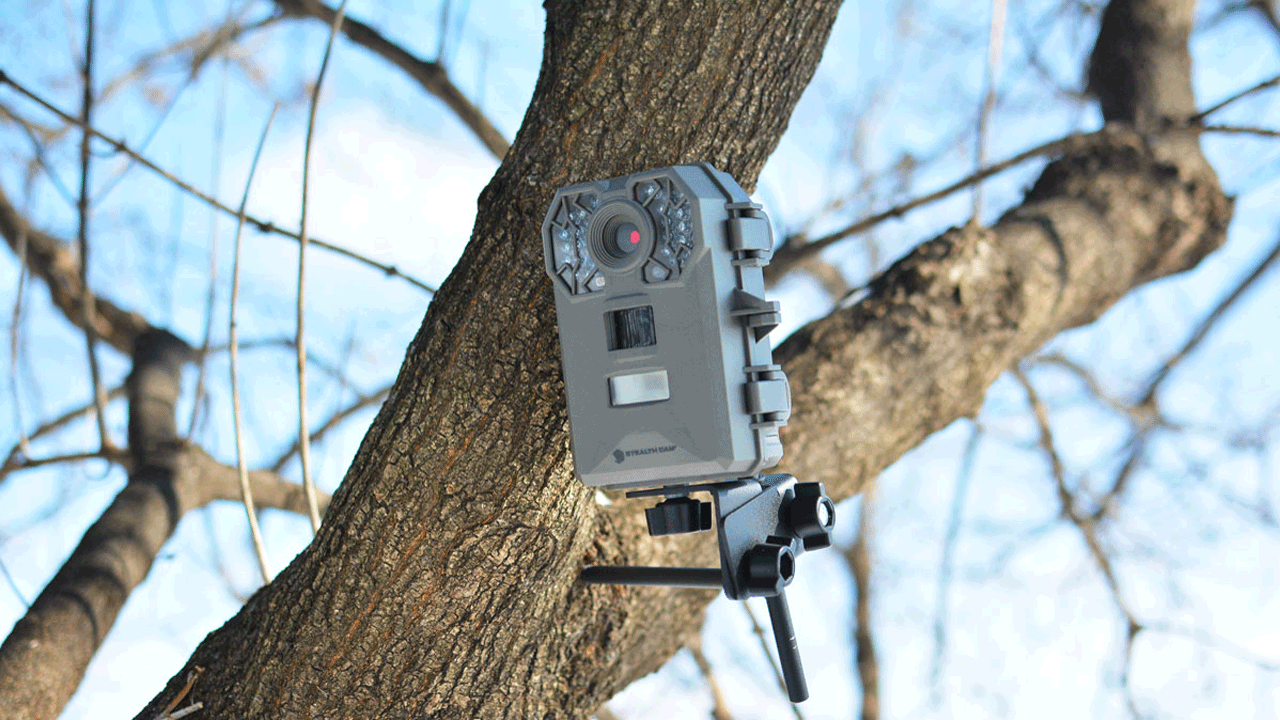
Trail cameras have changed the game when it comes to scouting for whitetail deer.
Planning Your Survey
Before conducting a trail camera survey, you’ll first need to decide when to do so. It needs to be a time when bucks are sporting fully developed antlers and deer patterns are not being heavily influenced by hunting pressure. That narrows it down to either right before deer season starts or right after it closes. Each has it’s own advantages and disadvantages.
The preseason survey is most popular because it gives the surveyor a great snapshot of what bucks are on the property leading into season and it’s also easier to identify fawns during this period. However, abundant native food or agricultural crops such as corn and soybeans can limit bait use during this time period, potentially having a negative impact on your survey. The other issue with a preseason survey is that bucks have a tendency to shift their patterns during the late summer, which means some of the bucks you find on your preseason survey may not be there come deer season.
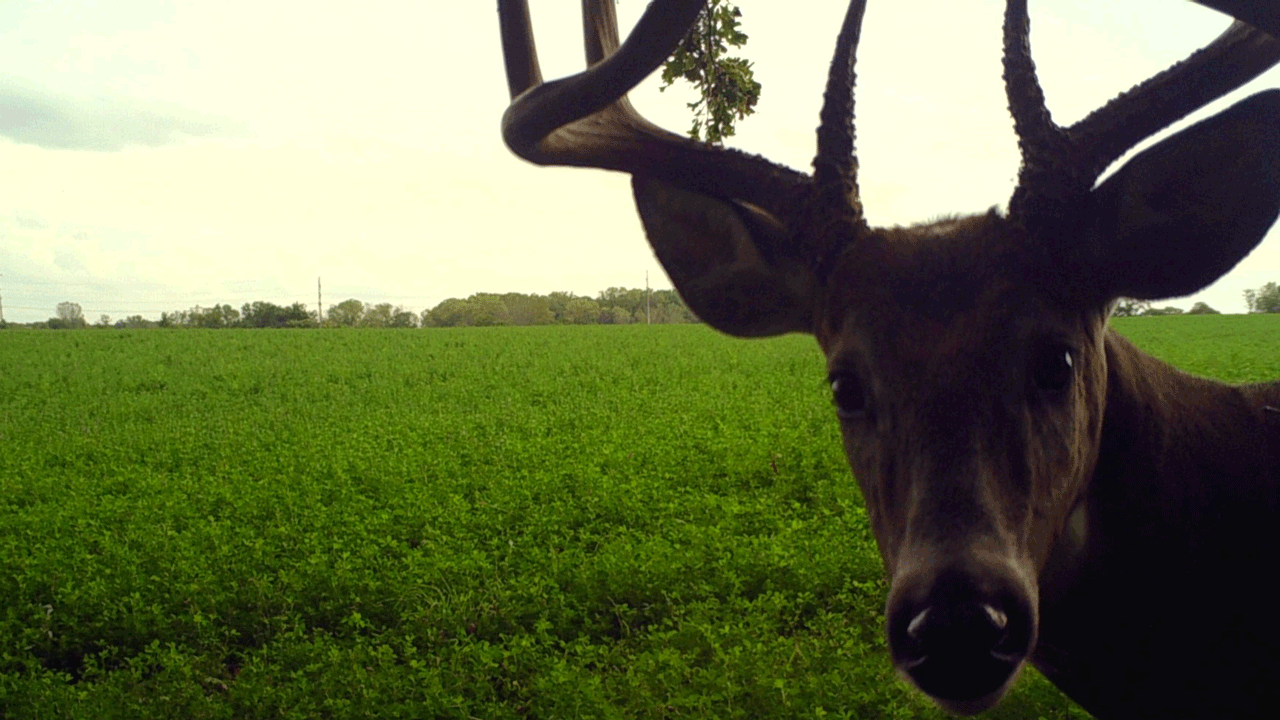
Consider when you’ll conduct your test to maximize results.
Post season is typically an easier time to attract deer into your baited camera sites because natural food sources are limited at that time of year. A post-season survey also gives you a good snapshot of which deer survived deer season, so you know which bucks to look for next season. The down side to surveying this time of year is that fawns can be more difficult to distinguish and, depending on how long deer season lasts in your area, some bucks may drop one or both antlers before your survey is complete.
Both pre-season and post-season surveys can provide you with good data, so it’s really a matter of personal preference and your ultimate goal for the survey. Of course you can always do both, providing you have the time and resources.
Equipment Needs for a Trail Camera Survey
As far as equipment goes, you’ll need one camera per 100 acres for best results. On large properties, that figure can be stretched as high as one camera per 160 acres and still achieve acceptable results. If that rate still leaves you short on cameras, you can always rotate the ones you do have until you’ve covered the entire property.
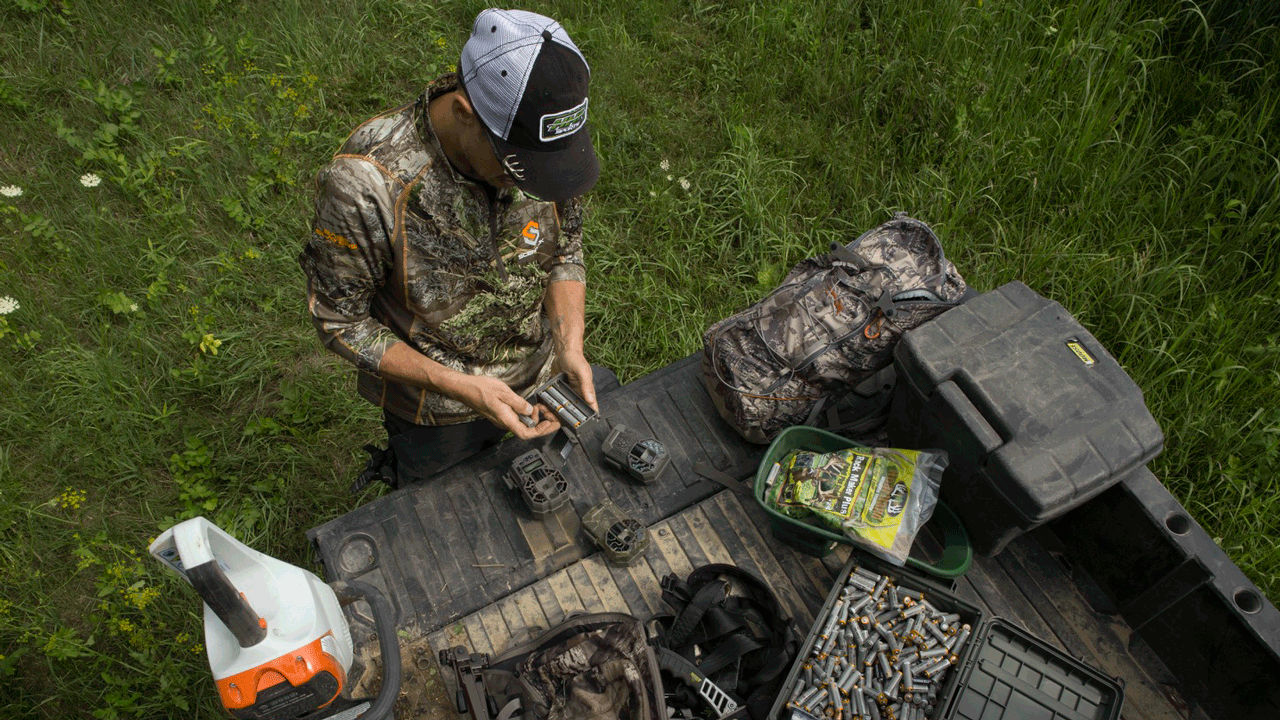
Tools of the trade.
In addition to cameras, you’ll also need enough whole-kernel corn to keep your sites baited for up to three weeks. If your state does not allow the use of bait even outside of deer season, then conducting an accurate survey will be a more difficult proposition. It can still be done, but the effectiveness of the survey and the accuracy of your data will likely suffer. There is research in progress now looking at ways to effectively conduct passive (non-baited) trail camera surveys, but we’ll have to wait for those results to know the best means of doing so.
Conducting the Survey
The first step in the actual survey process is determining where to place your bait and cameras. Start by gridding your hunting property into 100-acre blocks (or 160 acre blocks, if you opted to reduce costs with fewer cameras). Within each of these blocks, locate an area of high deer use somewhere near the center of the block, and clear all vegetation within a ten-foot radius. Pre-bait the area with approximately 50 pounds of corn for a week prior to starting the actual survey. This will allow time for the deer to find the bait and get accustomed to feeding at your bait sites. You can go ahead and put cameras out at this point to ensure they are functioning properly and capturing good, clear images of deer on the bait sites. Just keep in mind that the photos captured during this pre-baiting period will NOT be used in your post-survey calculations.
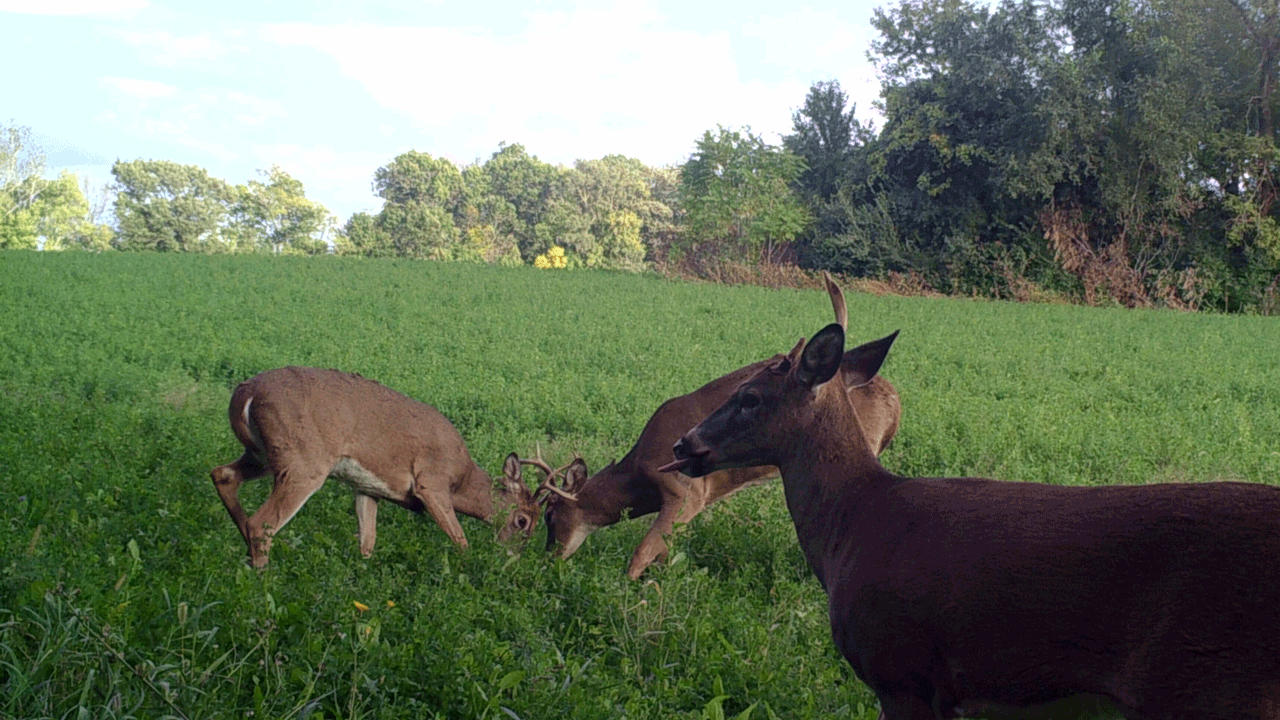
Selecting the proper location for your survey is important.
After a week of pre-baiting, it’s time to freshen up bait sites and officially kick off the survey. Researchers recommended aiming the camera 20-30 inches above the bait to eliminate unwanted photos of raccoons and other small animals, and setting the time delay to five minutes to avoid multiple photos of the same feeding session. If you have multiple bait stations, it is also a good idea to place a small numbered sign somewhere in the picture to keep track of where each picture comes from. Some camera models allow you to assign a “name” for the camera that show up in the photos. If this is the case with your cameras, you can forego the numbered signs and simply assign numbers to your cameras.
Once you have your cameras set up and the site freshly baited, leave them out for a minimum of a week, with two weeks being ideal for maximum accuracy. Depending on the property’s deer density, you may need to check your bait sites every few days to add bait as needed.
Sorting Through the Photos
Like opening presents on Christmas morning, the real fun begins when you start collecting SD cards to see what pictures you captured. Start by going through all your photos, counting the total number antlered bucks, does, and fawns. Be sure to write down a total figure for each group, leaving out any deer you cannot positively identify. Once you have your totals, you will then need to go back through the pictures a second time, carefully scrutinizing each one that includes a buck. The goal is to try to identify the number of unique, or individual, bucks photographed. Again, do not include unidentifiable deer.
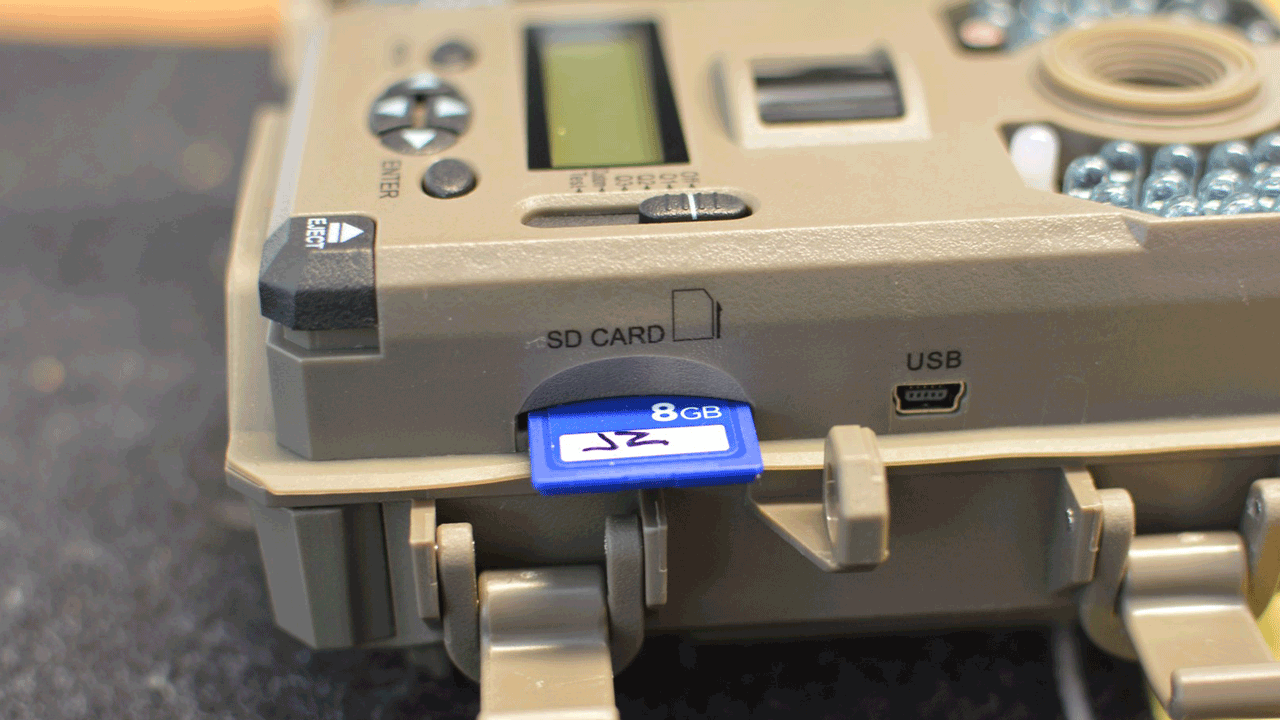
Few things are as exciting as pulling an SD card when it comes to scouting.
Doing the Math
When all the pictures have been sorted and all the identifiable bucks have been accounted for, it is time to get out your pencil, a notepad, and calculator. On the left side of a notepad, jot down “Total buck photos”, “Individual bucks”, “Total doe photos”, and “Total fawn photos”. Now move over to the right side of the notepad and record the corresponding numbers for each of those categories (see example below). In order to determine a “population factor”, divide the number of individual, or unique, bucks photographed by the total number of bucks recorded. You then take the resulting percentage and multiply it by the total number of does, and then by the total number of fawns. This should give you an accurate estimate of the number of individual does photographed, as well as the number of individual fawns. Now, simply total the number of individual bucks, does and fawns, and you have a population estimate for your property. To make this process simpler, the Quality Deer Management Association offers a downloadable trail camera survey calculation form at this link – https://www.qdma.com/wp-content/uploads/2016/07/QDMA_trail_cam_survey_computation.pdf
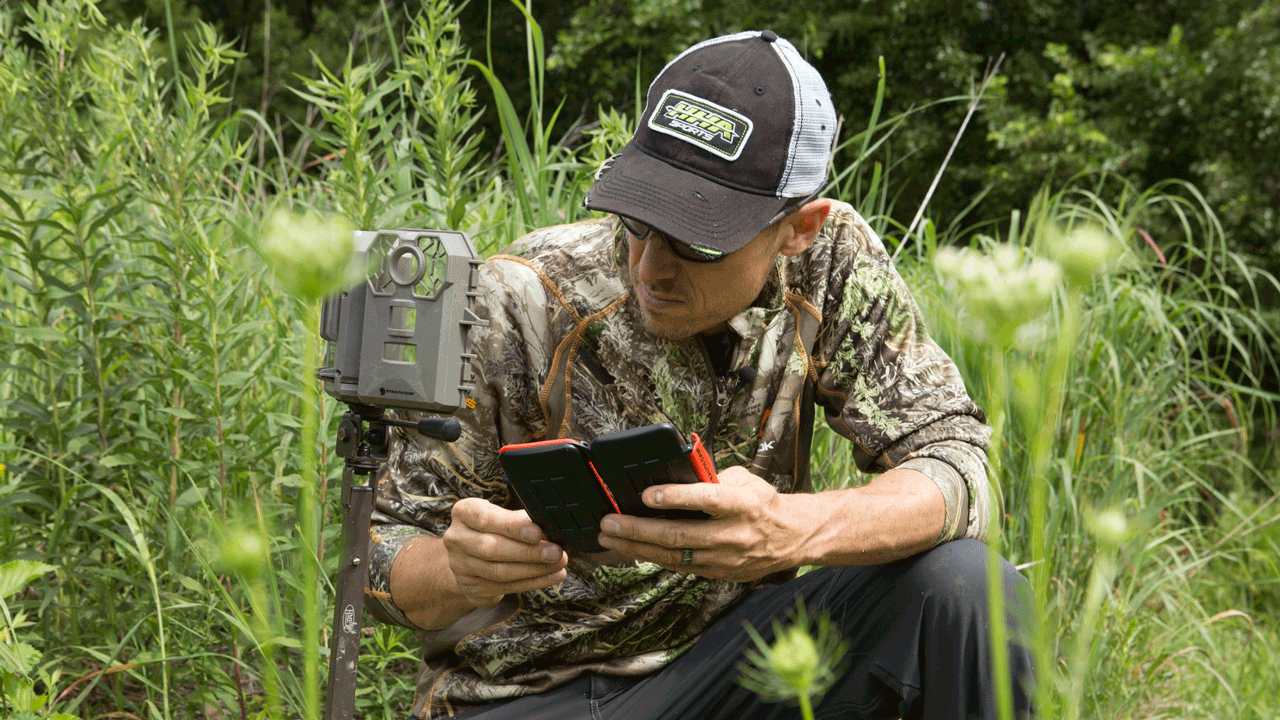
A trail camera survey can be a fun and exciting way to learn more on what your property holds.
Final Thoughts
It is important to note that the number you come up with will only be an estimate of the number of deer using your property. Depending on your ability to attract the deer to your bait stations, this estimate could be extremely accurate, or it could be considerably low as to what is actually there. Also keep in mind that unless you are dealing with a fenced enclosure, the deer “population” on your property can change daily as deer move back and forth across property lines for various reasons. What this survey does give you, however, is an index that can be used in conjunction with harvest data, field observations, and future trail camera surveys to make educated deer management decisions where you hunt.
Survey Notes
Acres surveyed = 2,000
Camera sites = 20 (1 per 100 acres)
Survey length = 14 days
Total buck photos = 200
Individual bucks identified = 40
Total doe photos = 500
Total fawn photos = 300
Population factor = (40 individual bucks/200 total bucks) = 0.20
Individual deer photographed
Bucks = 40
Does = 500 x 0.20 = 100
Fawns = 300 x 0.20 = 60
Total population = 200
Acres per deer = 2,000/200 = 10
Adult buck to doe ratio = 40/100 = 1:2.5
Fawn recruitment rate = 60/100 = .60 or 60%

 By
By 



